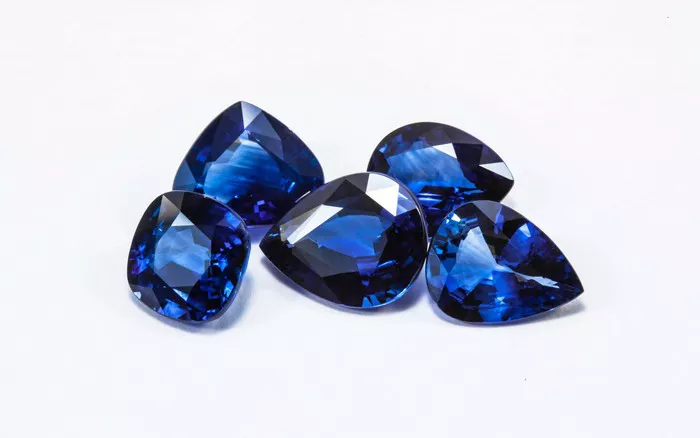Sapphires, renowned for their stunning blue hues and exceptional brilliance, have captivated humanity for centuries. As one of the hardest natural substances, they hold a reputation for durability and longevity. However, amidst the allure of their beauty, a pertinent question often arises: do sapphires chip easily? Delving into the intricate world of gemology, this article aims to explore the factors influencing the susceptibility of sapphires to chipping, dispel common misconceptions, and provide invaluable insights for both enthusiasts and prospective buyers.
Introduction to Sapphires: A Glimpse into Their Magnificence
Before delving into the durability aspect, it’s crucial to grasp the essence of sapphires. Belonging to the corundum mineral species, sapphires rank just below diamonds on the Mohs scale of hardness, boasting a remarkable score of 9. This exceptional hardness makes them highly resistant to scratches and abrasions, rendering them suitable for a myriad of jewelry applications. However, despite their robustness, sapphires, like any other gemstone, are not impervious to damage.
Understanding the Mohs Scale and Its Relevance
The Mohs scale, devised by Friedrich Mohs in 1812, serves as a standard measure of mineral hardness. It consists of ten minerals, each assigned a ranking based on its ability to scratch another mineral below it in the scale. Diamonds, with a Mohs hardness of 10, represent the apex of durability, while sapphires, positioned at 9, occupy a prestigious position alongside other resilient gems like rubies. This scale provides invaluable insight into the relative hardness of gemstones and aids in assessing their susceptibility to chipping and other forms of damage.
Factors Influencing Sapphire Durability
While the Mohs scale offers a foundational understanding of gemstone hardness, several other factors influence the durability of sapphires:
Crystal Structure: Sapphires owe their exceptional hardness to their crystal structure, characterized by densely packed molecules arranged in a trigonal lattice. This atomic arrangement imparts strength and resilience to the gemstone, reducing the likelihood of chipping.
Inclusions and Fractures: Despite their robustness, sapphires may contain internal flaws such as inclusions and fractures. These imperfections can compromise the structural integrity of the gemstone, increasing its susceptibility to chipping, especially under external pressure or impact.
Cut and Shape: The manner in which a sapphire is cut and shaped plays a pivotal role in its durability. Gemstones with sharp edges or thin girdles are more prone to chipping, as they lack the necessary structural support to withstand external forces.
Wear and Tear: Daily wear and tear can gradually weaken the surface of a sapphire, making it more susceptible to chipping. Activities involving significant physical exertion or exposure to abrasive substances can accelerate this process, necessitating periodic inspection and maintenance of sapphire jewelry.
Setting and Mounting: The setting and mounting of a sapphire within a piece of jewelry significantly impact its vulnerability to chipping. Secure settings that provide adequate protection to the gemstone minimize the risk of accidental damage, ensuring its longevity and pristine appearance.
Dispelling Common Misconceptions
Despite their remarkable hardness, sapphires are not immune to chipping, a fact often overlooked by consumers. Common misconceptions surrounding sapphire durability include:
Indestructibility: While sapphires are exceptionally hard, they are not indestructible. Excessive force or impact can cause chipping or even fracture the gemstone, necessitating caution during wear and handling.
Maintenance-Free: Contrary to popular belief, sapphires require regular maintenance to preserve their beauty and integrity. Periodic cleaning and inspection by a qualified jeweler help identify any signs of wear or damage, allowing for timely intervention and repair.
Uniform Durability: Not all sapphires exhibit the same level of durability. Factors such as origin, treatment, and internal characteristics can influence the gemstone’s resistance to chipping, highlighting the importance of informed purchasing decisions and proper care.
See Also: How to Tell if a Tennis Chain is Real: A Comprehensive Guide
Practical Tips for Sapphire Care and Maintenance
To minimize the risk of chipping and ensure the longevity of sapphire jewelry, consider the following tips:
Avoid Exposure to Harsh Chemicals: Chemicals found in household cleaners, perfumes, and cosmetics can corrode or damage sapphires over time. Remove jewelry before engaging in activities involving exposure to such substances to prevent deterioration.
Store Safely: When not in use, store sapphire jewelry in a soft pouch or lined jewelry box to prevent scratches and minimize contact with other hard surfaces. Avoid overcrowding, as this can lead to friction and potential damage.
Regular Cleaning: Clean sapphire jewelry with a mild soap solution and a soft brush, taking care to rinse thoroughly and dry with a lint-free cloth. Periodic cleaning removes dirt, oils, and debris that can accumulate on the surface, enhancing the gemstone’s brilliance and luster.
Professional Inspection: Schedule regular inspections with a reputable jeweler to assess the condition of your sapphire jewelry. Professional cleaning, polishing, and re-tightening of settings help maintain the integrity of the gemstone and prevent potential issues such as chipping or loss.
Exercise Caution: When wearing sapphire jewelry, exercise caution to avoid accidental impact or trauma. Remove rings before engaging in activities such as sports, gardening, or household chores that pose a risk of damage to the gemstone.
Conclusion: Preserving the Beauty of Sapphires
In conclusion, while sapphires are renowned for their exceptional hardness and durability, they are not impervious to damage. Understanding the factors influencing their susceptibility to chipping and adopting appropriate care and maintenance practices are essential steps in preserving their beauty and longevity. By adhering to the practical tips outlined in this article and dispelling common misconceptions, enthusiasts and consumers alike can enjoy the timeless allure of sapphire jewelry for generations to come.

